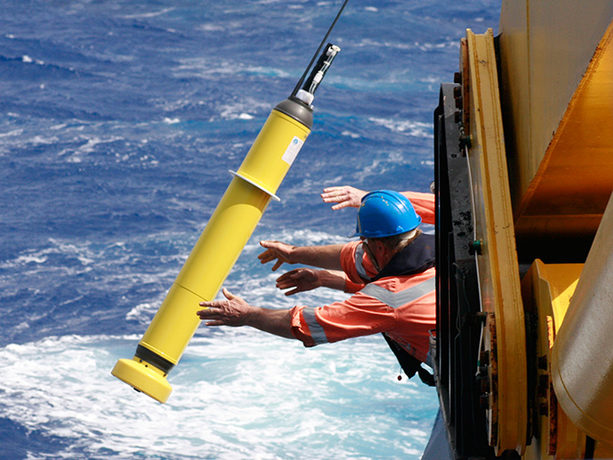Global S&T Development Trend Analysis Platform of Resources and Environment
| ECMWF extends observation monitoring to the ocean | |||
| admin | |||
| 2017-04-03 | |||
| 发布年 | 2017 | ||
| 语种 | 英语 | ||
| 国家 | 欧洲 | ||
| 领域 | 地球科学 ; 气候变化 | ||
| 正文(英文) | 
ECMWF has extended its weather observation monitoring system to ocean observations and has begun to publish the results on its website. Observation monitoring provides vital information on the availability and quality of weather observations from satellites, weather stations, aircraft and other sources. ECMWF has extended it to cover not just the ocean but also the land surface in order to support coupled data assimilation developments. This is in line with the Centre’s recently adopted 10-year Strategy, which calls for all relevant Earth system interactions to be taken into account to achieve ECMWF’s long-term goals. The routine monitoring of observations is a key element in diagnosing data assimilation systems. It serves to optimise the use made of observations and ultimately to improve the initial conditions on which forecasts are based. Monitoring results also provide data providers with important information as they highlight problematic observations and offer valuable guidance for the design of future observing systems. Finally, sharing monitoring results is very useful for numerical weather prediction centres as a way of comparing statistics and identifying weaknesses in each system.
This observation monitoring map shows the mean potential temperature (in °C) of the first 5 metres of the ocean as measured by Argo floats over the period 1 February 2017 to 27 March 2017. ECMWF now monitors all observations processed by the atmospheric, land surface and ocean data assimilation systems. A comprehensive set of statistics is publicly available from our observing system monitoring web page. The following ocean observations are monitored:
Monitoring statistics include a range of quantities indicative of the availability and quality of observations and of the magnitude of adjustments applied by the data assimilation system. Statistics are presented in various formats allowing the exploration of observations from different perspectives (for example time, depth, area).
Top image: An Argo float is deployed into the ocean. (Photo: CSIRO) | ||
| URL | 查看原文 | ||
| 来源平台 | European Centre for Medium-Range Weather Forecasts | ||
| 文献类型 | 新闻 | ||
| 条目标识符 | http://119.78.100.173/C666/handle/2XK7JSWQ/103367 | ||
| 专题 | 地球科学 气候变化 | ||
| 推荐引用方式 GB/T 7714 | admin. ECMWF extends observation monitoring to the ocean. 2017. |
| 条目包含的文件 | 条目无相关文件。 | |||||
| 个性服务 |
| 推荐该条目 |
| 保存到收藏夹 |
| 查看访问统计 |
| 导出为Endnote文件 |
| 谷歌学术 |
| 谷歌学术中相似的文章 |
| [admin]的文章 |
| 百度学术 |
| 百度学术中相似的文章 |
| [admin]的文章 |
| 必应学术 |
| 必应学术中相似的文章 |
| [admin]的文章 |
| 相关权益政策 |
| 暂无数据 |
| 收藏/分享 |
除非特别说明,本系统中所有内容都受版权保护,并保留所有权利。
修改评论